
There are hundreds of desktop PCs you can buy from brands like HP, Dell, Apple, and Lenovo, but only a select few make it on our list of the best desktops. We've reviewed dozens of desktop PCs across both Windows and macOS, and these 12 stand out from the pack.
The Dell XPS Desktop 8960 remains the best desktop PC you can buy in 2024. However, we have several other options depending on your budget and needs, including desktops for gaming, remote work, and more. We'll provide a quick overview here, but make sure to read our write-up on how we review desktops for a deeper look at our evaluation process.
Quick overview
- Dell XPS Desktop 8960: A highly flexible desktop that can accommodate almost any budget and purpose, from home office work to high-end gaming.
- Starforge Navigator: An attractive and performant gaming desktop with the right mix of value and flair.
- Apple iMac 24-inch: Apple's iMac 24-inch model is only better now with the M3 chip at the helm.
- Apple Mac Mini M2: A supercharged version of Apple's storied Mac Mini that's as portable as it is powerful.
- Falcon Northwest Talon: A flexible midtower that defines the outer limits of premium.
- Lenovo Yoga AIO 9i: One of the most powerful all-in-one PCs you can buy thanks to with a stunning set of features.
- Corsair One i500: A tiny desktop PC that's very powerful for gaming and content creation.
- Apple Mac Studio: A tiny PC that packs some of the most powerful hardware on the market.
- HP Envy Move: The perfect desktop for a hybrid working style.
- Lenovo ThinkStation P620: A powerful workstation that can handle the most demanding tasks.
- Asus ROG NUC 970: A tiny gaming PC that packs a punch with the NUC brand.
- Lenovo Legion Tower 5i: A powerful gaming PC available for around $1,000.
Why you should trust us
We've reviewed hundreds of desktop PCs for years, looking for machines that stand out for gaming, home office use, photo and video editing, and so much more. From miniature PCs that can fit on a bookshelf to behemoth desktops with custom liquid cooling, we've seen literally everything, and we know what stands out and what doesn't.
Key considerations when selecting the best desktop
There are a few key areas we focus on when looking a desktop computer.
Performance
Performance is king when it comes to a desktop computer, but it's not an equal bar for every PC. Some machines, like the Mac Mini, are offering power in a portable package, while a desktop like the Lenovo Legion Tower 7i goes all-out for gaming prowess. We meet desktops where they're at, evaluating what they're trying to accomplish, and at what price.
Build quality
A desktop may look nice, but it's built of cheap plastics and throwaway components, it won't last for long. Our review process includes a teardown of every desktop to understand what the internal components look like. In addition, we look at fan placement, ventilation, and cooling to ensure the desktops will stay quiet during operation without overheating.
Support
Things go wrong with PCs, so it's important to have a robust support system in place. A one-year warranty is standard on most electronics, so we look for companies that go above and beyond what's required with multi-year warranties and around-the-clock support.
Upgradability
One of the main benefits of a desktop PC is that you can upgrade it in the future, but some brands have missed that memo. We keep an eye out for proprietary components and try to focus on desktops that provide some upgrade paths for users. This isn't possible for all machines, though, such as Apple's iMac, where upgrades are tricky for end users due to the form factor.
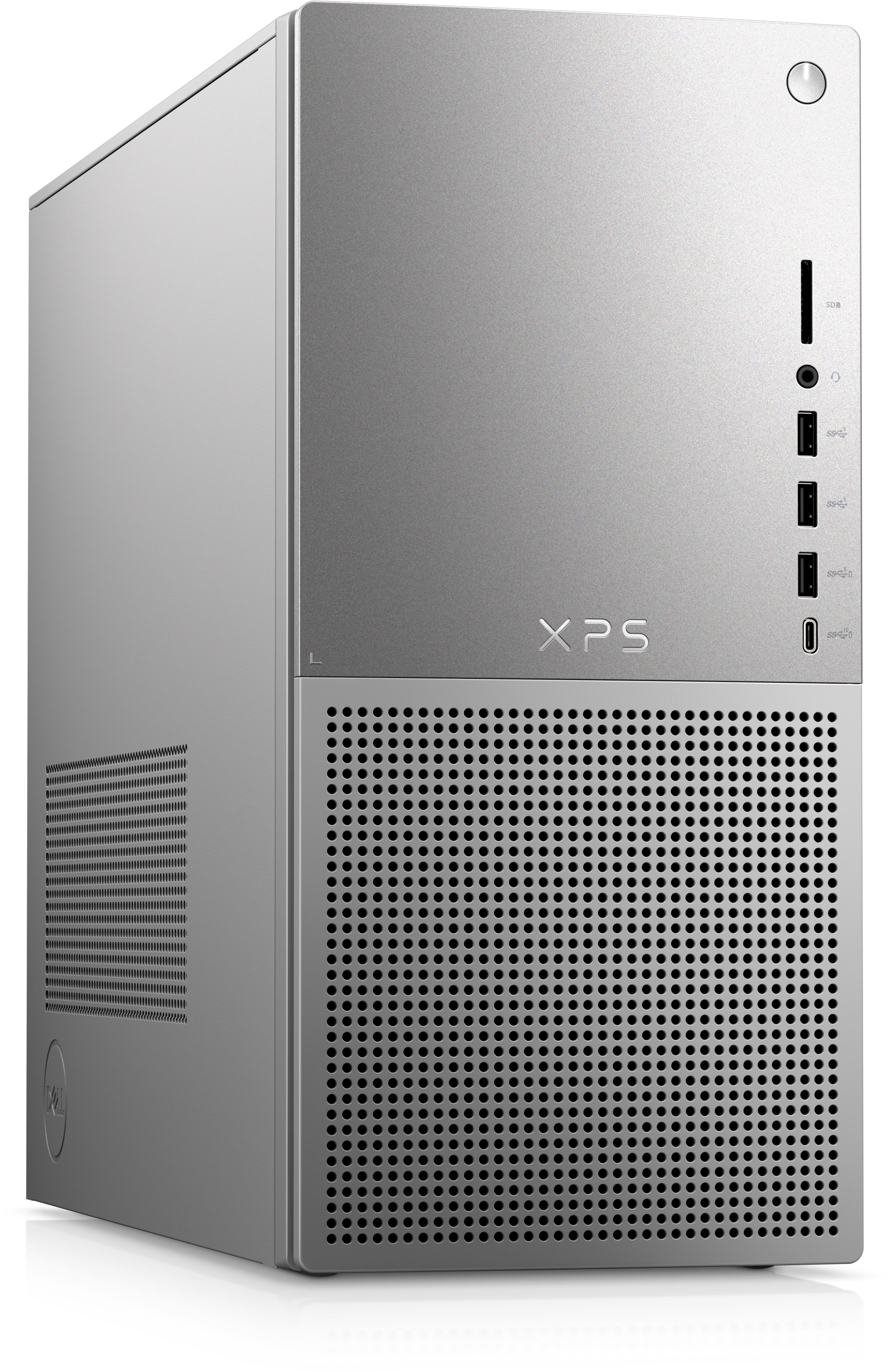
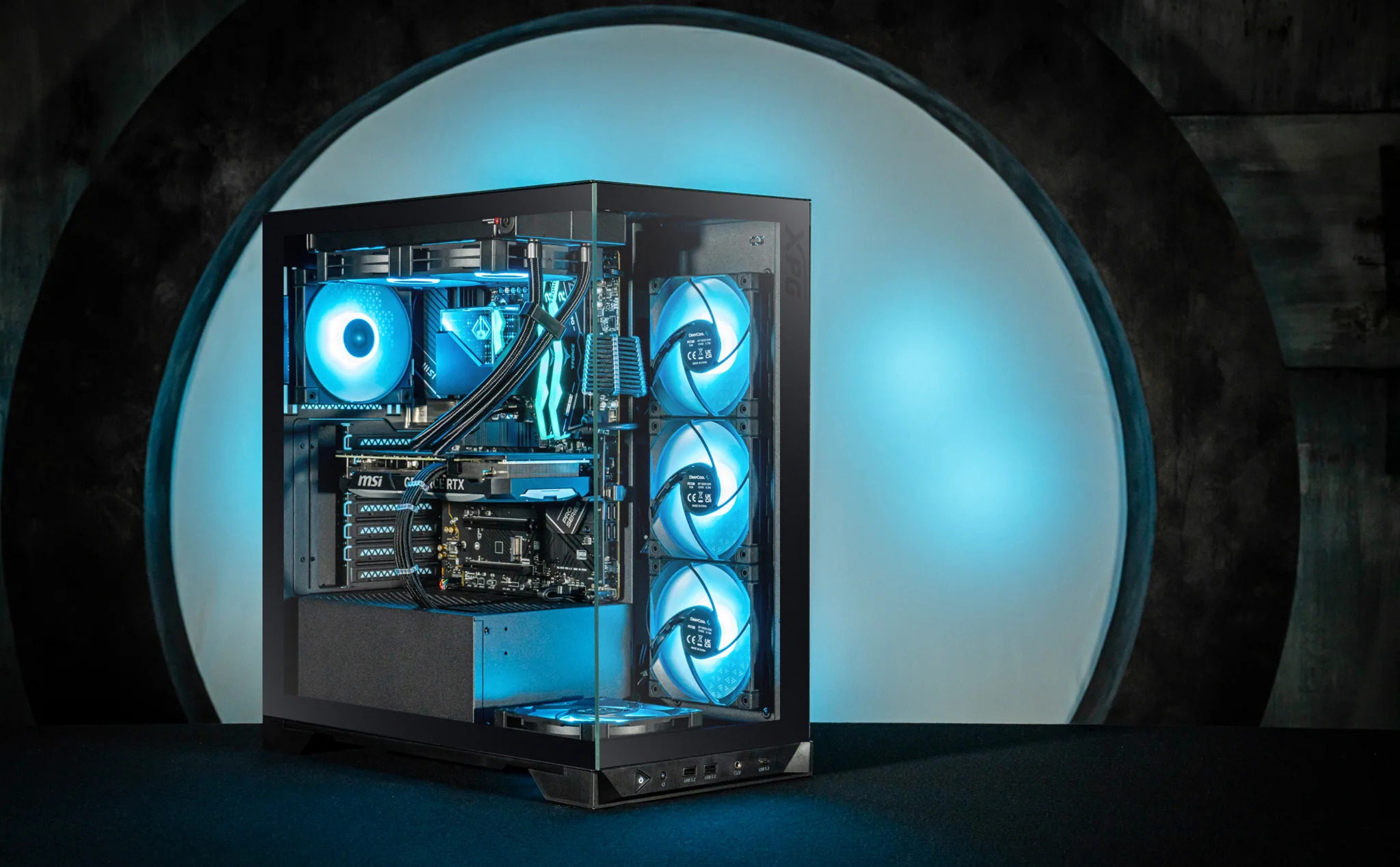

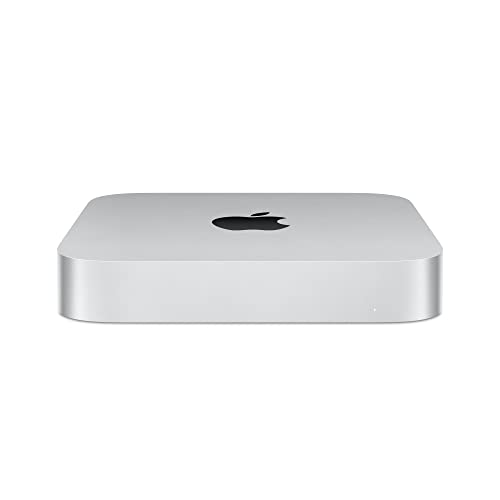
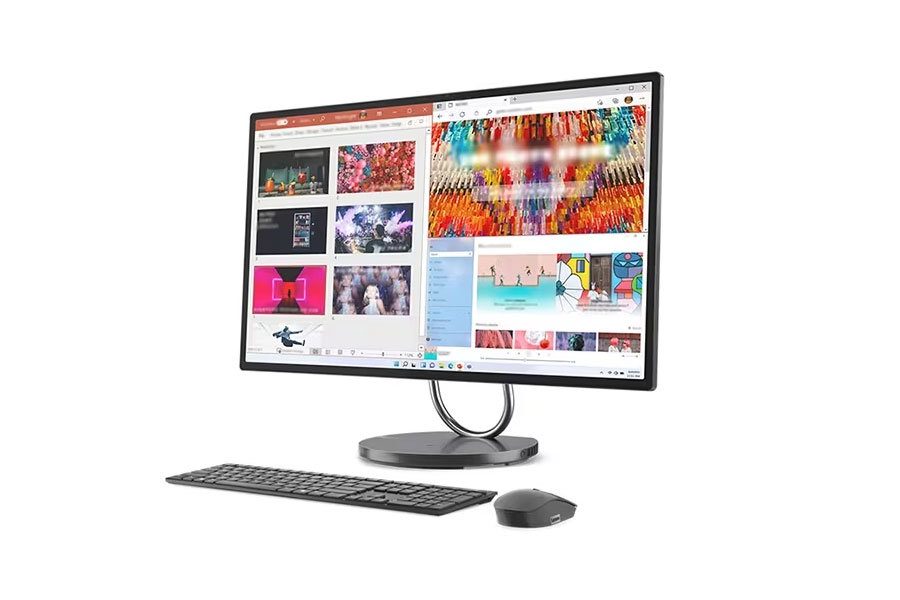
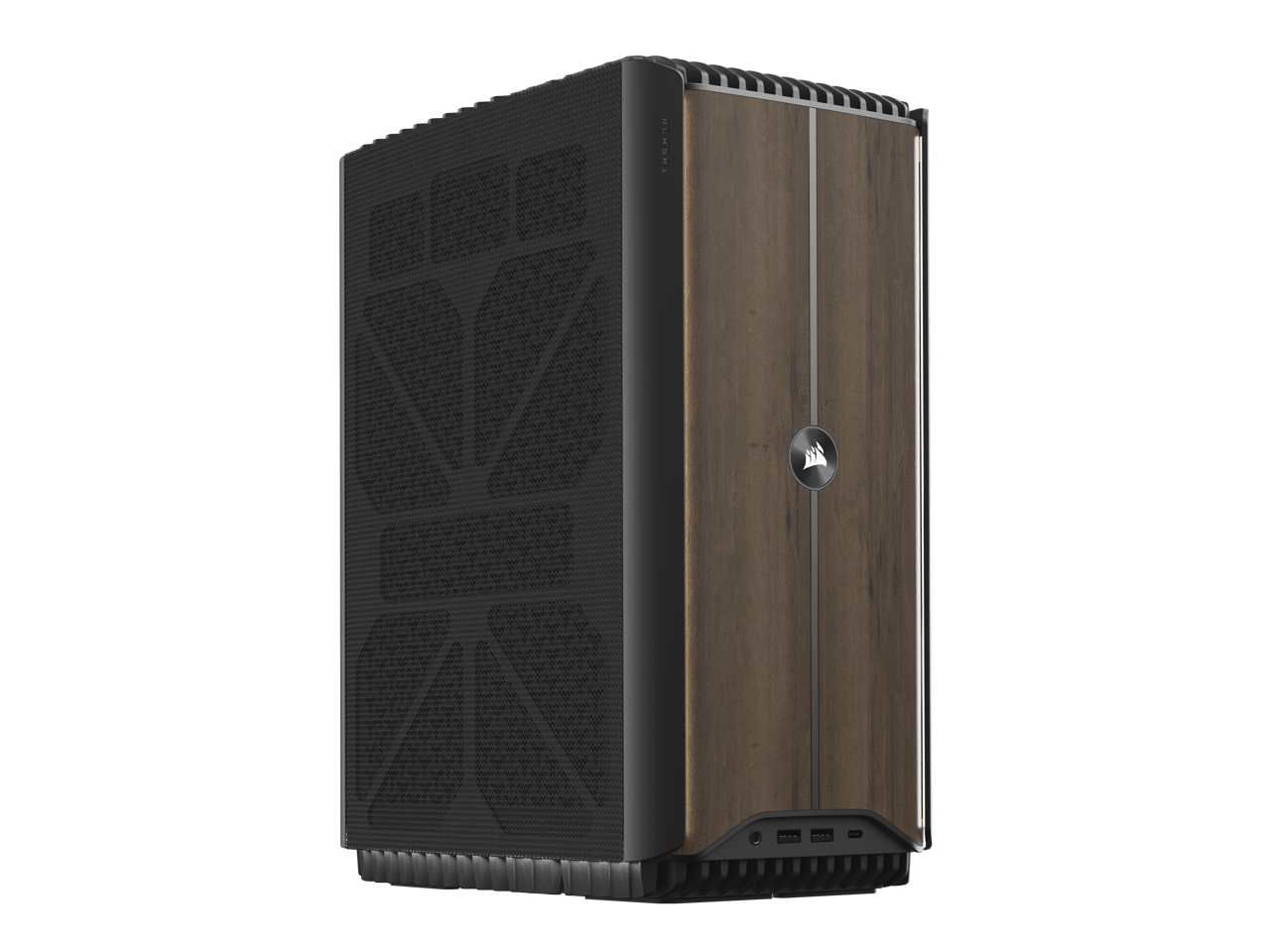

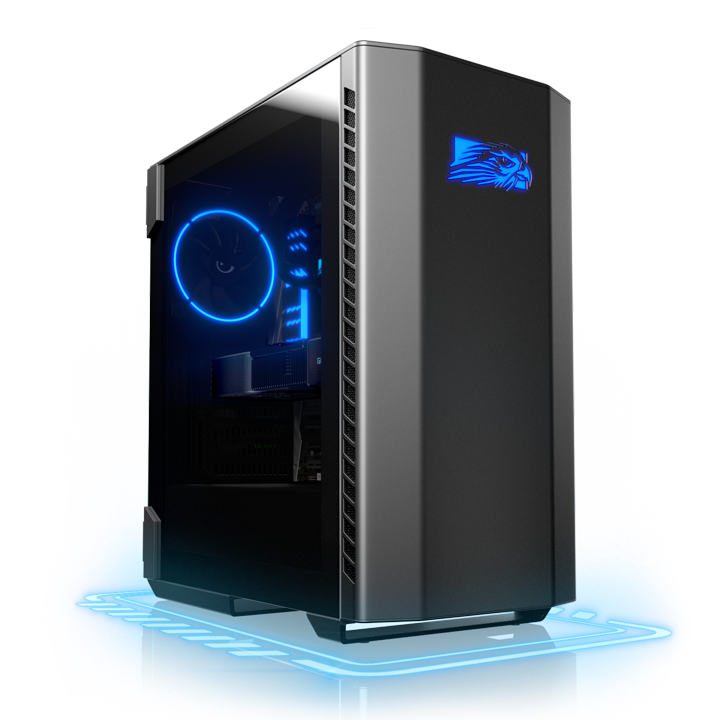

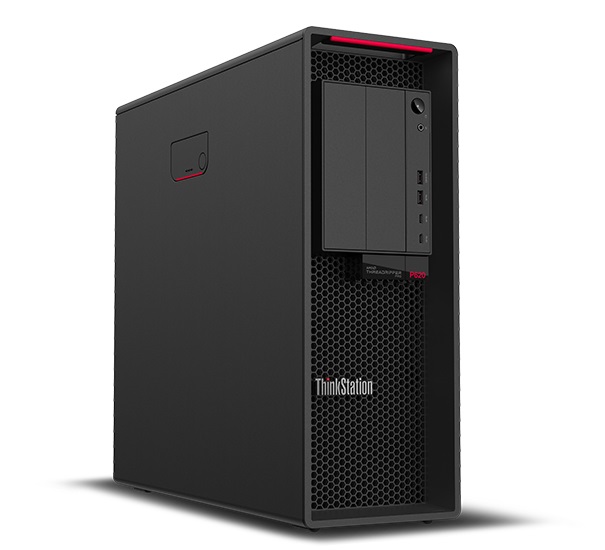



The best desktop computer
Dell XPS 8960
- Flagship performance
- Understated, attractive design
- Relatively quiet
- Solid port selection
- Limited upgrade potential
- Expensive
| Specifications | |
|---|---|
| CPU | Intel Core i7-13700K |
| GPU | Nvidia RTX 4080 |
| RAM | 32GB DDR5-4800 |
| Storage | 1TB NVMe SSD |
| Ports | 5x USB 3.2 Type-A, 2x USB 2.0 Type-A, 2x USB-C, 1x SD card reader |
The best overall desktop PC is the one that will work for the most people, and that's the Dell XPS 8960. It's understated in all the right ways, reasonably priced considering the power you can pack inside, and comes in a variety of configurations to suit work, gaming, or both. Choosing the highest-rated PC isn't easy, but the Dell XPS 8960 gets rid of that issue.
Regardless of what configuration you choose, you'll find something that matches your needs. That's because Dell builds them custom ordered, which is the best feature of the XPS 8960. The options are nearly endless, with prices ranging from $750 to over $3,000 depending on the parts you choose. Some of the desktops come without a discrete graphics card, meaning they're more suited for work than games. However, you can get one of the more expensive ones that include a discrete graphics card.
Dell is offering this new XPS desktop with Intel Raptor Lake and DDR5 RAM for those who are in search of the best gaming PC. You can add up to an RTX 4090 graphics card as well, which is a serious amount of power considering the size of the machine. Powerful hardware means more heat, but the XPS 8960 gets rid of it well with optional liquid cooling and a case with plenty of room for airflow.


The best desktop PC for gaming
Starforge Navigator
- Excellent build quality
- No bloatware
- Solid performance
- Two-year warranty
- A bit expensive
- Extra fans add extra noise
| Specifications | |
|---|---|
| CPU | AMD Ryzen 5 7600X |
| GPU | Nvidia RTX 4070 |
| RAM | 32GB DDR5-6000 |
| Storage | 1TB PCIe 4.0 NVMe SSD |
PC builders are a dime a dozen these days, but Starforge Systems still manages to stand out. Instead of endless customization, Starforge offers a concise lineup of prebuilt gaming PCs that use off-the-shelf parts. Even better, they're configured in a way that makes them look and perform like a custom PC.
We're recommending the Navigator, which is a $1,900 build that comes packed with an Nvidia RTX 4070 and an AMD Ryzen 5 7600X. The CPU is a bit weak for the price, but you're getting an excellent GPU, along with an attractive XPG case and a flashy liquid cooler.
Glitz is one thing, but the Navigator performs as good as it looks. In our testing, it was able to match a custom PC with an RTX 4070 without resorting to crazy temperatures. On top of that, Starforge adds extras like cable combs into the build, keeping the interior looking as clean as the PC performs.


The best desktop for photo editing
Apple iMac 24-inch
- M3 brings exponential GPU performance
- Great, thin design
- Full-bodied speakers
- Excellent webcam
- Bright, colorful display
- Limited ports
- Touch ID costs extra
| Specifications | |
|---|---|
| CPU | Apple M3 |
| GPU | Apple M3 |
| RAM | Up to 24GB |
| Storage | Up to 2TB |
Apple's iMac 24-inch hasn't seen a lot of love, but that all changed with the introduction of the M3 chip. Sporting the same stunning design and beautiful screen we fell in love with a few years ago, the iMac Apple is selling today truly is the same, but better.
That all comes down to the M3 chip. Compared to its M1 predecessor, the new model is at least 20% faster, and often much more. The graphics processor, in particular, is impressive. It even manages to beat some of Apple's older Pro series chips, going as far as to have playable performance in games like Lies of P.
Apple didn't change much else about the iMac, but it didn't need to. The 4.5K Retina display is still stunning with a high pixel density, and the speakers are second to none. The upgraded webcam is exceptional, too, offering up a 1080p resolution for crisp video calls. If you're looking for an all-in-one that just works in 2024, the iMac M3 is for you.


The best desktop computer for home
Apple Mac mini M2
- Still very compact
- M2 Pro boosts the graphics
- Lots of storage options
- Stays amazingly quiet and cool
- Fantastic port selection
- Very affordable base configuration
- Base configuration has slower SSD
- Not user upgradable
| Specifications | |
|---|---|
| CPU | 8-core Apple M2 |
| GPU | 10-core Apple M2 |
| RAM | 8GB Unified Memory |
| Storage | 512GB NVMe SSD |
| Ports | 2x Thunderbolt 4, 3.5mm headphone, Gigabit Ethernet, 2x USB-A ports |
We rarely give products a perfect score, but that's exactly what Apple's Mac mini M2 earned in our full review. The updated mini PC features the same compact footprint that Apple has used for over a decade, but now with a major update under the hood.
The base M2 model is a big upgrade over 2020's Mac mini M1, but the updated desktop really shines with the M2 Pro chip. That takes the Mac mini from being a MacBook without a screen to a full-fledged creator machine capable of tackling the most demanding tasks you can throw at a computer today.
The only problem is the base configuration, which comes with a much slower SSD. We wholeheartedly recommend the Mac mini M2, but make sure to read our Mac mini M2 buying guide to pick the right configuration.


The best desktop computer for work
Lenovo Yoga AIO 9i
- Gorgeous stand
- Beautiful 4K display
- Wireless charging on the stand
- USB 4.0 port
- Solid CPU performance
- No ports upfront
- Mediocre webcam
- No discrete GPU at $1,500
| Specifications | |
|---|---|
| CPU | Intel Core i9-13900H |
| GPU | Intel Iris Xe |
| RAM | 32GB |
| Storage | Up to 1TB |
It's really hard recommending an all-in-one over Apple's iMac, but the Lenovo Yoga AIO 9i is certainly a contender. It's a 4K desktop that impresses with great performance, a solid price, and one of the best integrated displays we've seen, as well as some unique features.
The machine is powered by Intel's Core i9-13900H, which is one of the most powerful mobile CPUs you can buy. It's more than enough to handle work applications, and it can even step up for some photo or video editing. More impressive, you can configure the machine with a mobile RTX 4050 graphics card, giving you a little gaming grunt if you need it.
The Yoga AIO 9i makes this list due to its screen and features, however. The 32-inch 4K display is stunning with its glossy finish, and it comes with great color accuracy out of the box. It has some tricks in the base, as well, including a wireless charging pad for your phone.


The best mini gaming PC
Corsair One i500
- Beautiful case design
- Surprisingly capable performance
- Minimal bloatware
- Back I/O light
- Upgradeable
- Expensive
- CPU is a bit too hot to handle
| Specifications | |
|---|---|
| CPU | Intel Core i9-14900K |
| GPU | Nvidia RTX 4090 |
| RAM | 32GB DDR5-6000 |
| Storage | 2TB NVMe SSD |
| Ports | Front: 2x USB 3.2, 1x USB-C / Back: 4x USB 3.2 Gen 2, 1x USB-C |
The Corsair One i500 is a monster, and you can tell that just from the spec sheet. It comes with an RTX 4090 and a Core i9-14900K, so you're getting the most powerful hardware money can buy. What's surprising is that Corsair manages to fit such powerful components in a tiny case, and with plenty of good looks in tow.
How does Corsair pull it off? Liquid cooling. Corsair includes liquid coolers for both the CPU and GPU inside the One i500, which not only keeps temperatures in check, but also helps the machine stay quiet under load. Even with such a tiny a footprint, the Corsair One i500 barely sacrifices any performance. It's within a few percentage points of a custom desktop with an elaborate cooling scheme.
As you might suspect, Corsair commands a high price of $4,700 for such a monstrous PC. Although expensive, the Corsair One i500 isn't unreasonably priced. It's only a few hundred dollars more than the cost of building a similar PC yourself, and that's ignoring the gorgeous wooden finish available on the case Corsair uses.


The best desktop for video editing
Apple Mac Studio
- Superior build quality
- Small chassis
- Solid connectivity
- Excellent creativity performance
- Quiet operation
- Elegant aesthetic
- Expensive
- Mediocre gaming
| Specifications | |
|---|---|
| CPU | Apple M2 Max or M2 Ultra |
| GPU | Apple M2 Max or M2 Ultra |
| RAM | Up to 192GB |
| Storage | Up to 8TB |
It feels like the Mac Studio has finally found its footing. It straddled a strange line previous, not quite reaching the level of the Mac Pro while falling short of the value-focused Mac mini. With the M2 Ultra or M2 Max, the Mac Studio finally feels like premium, Pro-level Mac Apple fans have waited for.
It's crazy fast, getting close and sometimes even beating top-level PC components like the Core i9-13900K and RTX 4090. That's all the more impressive considering the size of the Mac Studio, which barely takes up a fraction of your desk space. Even considering the high price, the performance and size of the Mac Studio make it feel like a downright deal.
It has all of the professional trimmings you'd expect, too, including support for massive storage arrays and great external monitor support. The Mac mini is still better for most people, but if you can take advantage of the power of the Mac Studio, it's tough to beat.


The best desktop for visual effects
Falcon Northwest Talon
- Immaculate build quality
- Stunning level of detail
- The latest and greatest parts
- God tier warranty and support
- Great thermals
- Niche appeal
- Shockingly expensive
| Specifications | |
|---|---|
| CPU | Intel Core i9-14900KS |
| GPU | Nvidia RTX 4090 |
| RAM | 64GB DDR5 |
| Storage | 2TB NVMe SSD |
No one builds computers like Falcon Northwest. It's one of the few remaining boutique PC builders that truly goes the extra mile to ensure you get something that's of the highest quality possible. Its customizable Talon midtower is a prime example of that. You have a ton of options to configure the PC, and it comes with a quality that's unmatched in the PC industry.
Falcon Northwest charges a hefty premium, but you get what you pay for with the Talon. Our review unit came with the highest-end consumer hardware you can buy, but Falcon Northwest has options for workstation-class hardware, too. You can stuff a Threadripper, Threadripper Pro, or Xeon W CPU in the PC, along with up to dual RTX 6000 Ada workstation GPUs.
Although it's true that you can get the same components for cheaper elsewhere, Falcon Northwest's attention to detail stands out. Not only do you get a PC that's expertly crafted internally but you also get a full report with a series of tests Falcon Northwest has run on your exact machine. If you want something that will stand the test of time, the Talon is for you.


The best desktop computer for home office
HP Envy Move
- Affordable
- Well-designed portability
- Solid build quality
- Display is touch-enabled
- Runs on battery
- Mediocre performance
- Average display
- Keyboard is fatiguing
| Specifications | |
|---|---|
| CPU | Intel Core i5-1355U |
| GPU | Intel Iris Xe |
| RAM | 16GB |
| Storage | Up to 1TB |
The HP Envy Move is one of the most unique desktops we've ever seen. It's a desktop, but it's also portable, and it's the perfect fit for the hybrid work style so many of us have fallen into.
It's a basic all-in-one at its core, but the Envy Move's trick is that the legs automatically fold in, allowing you to pick it up and carry it with you. There's a carrying handle on the back, and activating it will automatically tuck in the legs. And with an included battery, you really can pick up your PC and take it anywhere. There's even a sleeve in the back so you can tuck in the included keyboard/trackpad combo.
HP doesn't charge a massive premium for this design, either. The Envy Move starts at just $750 for a mobile Intel 13th-gen CPU, which offers acceptable performance for basic home office tasks.


The best desktop workstation computer
Lenovo ThinkStation P620
- Insane processor performance
- Easily upgradeable
- Tool-free design
- 10Gb Ethernet
- Runs loud
| Specifications | |
|---|---|
| CPU | AMD Ryzen Threadripper Pro 3995WX |
| GPU | Nvidia Quadro RTX 8000 48GB |
| RAM | 128GB octa-channel DDR4-3200 ECC |
| Storage | 1TB NVMe SSD |
| Ports | 8x USB-A, 2x USB-C, 3.5mm headphone, PS/2 |
The Lenovo ThinkStation P620 is a workstation in every sense of the word. This is a desktop designed to perform the most resource-heavy tasks out there. Created specifically for engineering, data science, machine learning, 3D modeling, video editing, and more, the ThinkStation is the kind of PC that will find uses across many fields, aiding professionals in their daily tasks.
More importantly, it's the only workstation available now with AMD's Threadripper 5000 Pro processors. You can pack in up to a Threadripper Pro 5995WX processor, which packs in 64 cores and 128 threads, along with an astounding 256MB of L3 cache. Similarly, you can add up to two Nvidia Quadro GV100 GPUs, which is powerful enough for even the most demanding tasks.
The other specs are just as impressive – eight RAM slots for up to 512GB of memory, as well as six drive slots for up to 24TB of storage. Windows 11 comes default on the machine, but you can also have it pre-configured for Red Hat Enterprise Linux or Ubuntu as well.
The Lenovo P620 isn't for everyone. It's an insanely expensive workstation that can cost upwards of $40,000 fully tricked out, but for professionals who demand peak performance, nothing can touch the ThinkStation P620.


The best NUC desktop
Asus ROG NUC 970
- It's remarkably small
- Easy upgradability
- Solid port selection and connectivity
- Fantastic stand
- On the expensive side
- Performance is good, but closer to a laptop
| Specifications | |
|---|---|
| CPU | Intel Core Ultra 9 185H |
| GPU | Nvidia RTX 4070 mobile |
| RAM | 32GB DDR5 SODIMM |
| Storage | 1TB NVMe SSD |
Asus has taken over the NUC brand from Intel, and its first gaming-focused NUC device is mighty impressive. The ROG NUC 970 is an impossibly small gaming PC, clocking in at just 2.5 liters in volume. Despite its petite size, Asus was able to cram in the more powerful Intel Core Ultra CPU currently available, as well as mobile RTX 4070 graphics card.
You're not getting full desktop performance, but considering the size of the NUC 970, this thing is a monster. It's fantastic for 1440p gaming, and with Nvidia's DLSS 3.5 available to the graphics card, it can even push demanding titles like Cyberpunk 2077 and Alan Wake 2.
Although you're a bit restricted in upgrades due to the unique NUC form factor, Asus still allows you to swap our the RAM and add additional SSDs. There are three SSD slots in total, giving you space for upward of 24TB of storage.


The best budget gaming PC
Lenovo Legion Tower 5i
- Under $1,000
- Great performance for 1080p
- Space to upgrade storage
- Minimal bloatware
- Platform upgrades not possible
- Weaker CPU
| Specifications | |
|---|---|
| CPU | Intel Core i5-14400F |
| GPU | Nvidia RTX 4060 |
| RAM | 16GB DDR5 |
| Storage | 1TB NVMe SSD |
For a while, it seemed like the era of gaming desktops under $1,000 was behind us. The Lenovo Legion Tower 5i proves that's not the case. You can pick it up for as little as $950, and it comes with enough performance to play even the most demanding games at high settings. Combined with some smart upgrade paths, the Lenovo Legion Tower 5i is an excellent introduction into PC gaming.
The RTX 4060 pulls the most weight, and it's a great GPU for 1080p gaming. It's not quite powerful enough to push ray tracing in games like Alan Wake 2, but Nvidia's DLSS 3.5 allows high frame rates at maxed-out graphics settings through a combination of upscaling and frame generation. The Intel Core i5-14400F in the PC isn't the most powerful CPU, but it's more than enough when it comes to gaming.
Lenovo manages to keep heat under control, and the PC barely makes a whisper during gameplay. You have some compelling upgrade options, too. Lenovo pre-routes cables to the two hard drive sleds, and there's a spare NVMe slot. Unfortunately, the motherboard uses a unique design, so you can't do a full platform swap down the line.

Frequently Asked Questions
Dell, HP, Lenovo – how do you know what brand of desktop PC is best for you? Brand loyalty isn't the best way to approach desktop PCs, but brands have certain specialties. Apple is focused on rock-solid performance and a clean user experience for a slightly higher price, for example, while Dell creates several PCs that have the bandwidth for a home office and a gaming setup.
The best thing to do is look at individual desktop reviews rather than relying on what someone says is the "best brand." Some brands come out with excellent PCs one generation and poor desktops the next, so it's important to check in on reviews when you need to upgrade.
The best CPU will depend on how you're using your desktop. Gamers who want the utmost performance will want an overclockable Intel Core i9-14900K found on most high-end systems, while creatives looking at juggling large media files will want something with more cores. That means AMD, which offers 12- and 16-core chips in the form of the AMD Ryzen 7900X and 7950X.
If you're working primarily on Office files and use your desktop to browse the web, scaling down to an Intel Core i5 or Core i7, or an AMD Ryzen 7 or Ryzen 5 processor, would help make substantial savings without impacting performance much.
USB-C is beginning to show up in more desktop builds, but it's still more common on laptops. It's not strictly necessary, as there are plenty of USB-A to USB-C cables out there, but if it's a must for you, keep an eye on the case that your new system comes in. That will or won't have USB-C as standard.
Thunderbolt 3 uses the USB-C form factor but it offers the most bandwidth of any USB-based wired connection available at this time, giving speeds that scorch standard USB ports. However, it is even less common on desktops than plain old USB-C. If you want it, you'll need to go with an Intel or Apple system, though if you opt for the former and Thunderbolt 3 is not standard on the chassis or motherboard, you could always get a PCI-Express add-in card that has it.
The best time to buy a desktop is when your current computer isn't able to handle the applications you want to use. Black Friday and Amazon Prime Day usually bring the steepest discounts on desktop computers, but the reality is that you can score a deal on a PC almost any time during the year. Make sure to keep our roundup of the best desktop deals handy for when you want to upgrade.
Choosing between a desktop and a laptop comes down to portability and comfort. You can take a laptop nearly anywhere, but they're not as comfortable to use as desktops with a larger screen. On the other hand, a desktop is more flexible and allows you to use a keyboard/mouse combo you like, but it's restricted to one area.
Consider what you'll use your machine for. If you're gaming, for example, a desktop makes more sense. If you're answering email and browsing the internet, a laptop is probably better a option.
How to choose a desktop computer
If your existing PC is so slow it can barely run Windows Solitaire, let alone video editing software, don’t fret. There’s some good news for computer users facing the inevitable upgrade: There’s never been a better time to buy a new PC.
Prices are at an all-time low, while at the same time, computers are becoming incredibly powerful and full of convenient features. But choosing the right computer to match your needs and budget can be an overwhelming task -- especially for tech-shy folks intimidated by geeky terminology and pushy salespeople.
Here's how to choose a computer that's just right for you.
Laptop or desktop
If you require portability, then a laptop (also referred to as a “notebook”) PC is for you. But if you want the flexibility of adding a larger display or upgrading other components (such as adding a bigger hard drive or better video card), then perhaps a desktop PC is the way to go.
If you buy a desktop computer, you will also need a display to plug into it to see anything, unless you buy an all-in-one computer, such as Dell All-in-One or an Apple iMac, which have the display built directly into the unit. If you’ve decided on a laptop, you'll need to consider portability like weight and size. A larger screen is nice, but do you want to deal with the added size and weight? The bigger the screen (e.g. 17 inches as opposed to 12 inches), the bigger and heavier the laptop will be.
While laptops are becoming more powerful, a desktop is still better suited for graphic-intensive applications such as computer gaming, video editing, or animation rendering. But if portability is a priority, then laptops are the only way to go.
Other things to keep in mind when deciding between a laptop and a desktop computer include upfront costs, noise and cooling, and peripherals. You should expect a laptop to cost a bit more than a desktop of similar specifications, as you're buying the display and input mechanisms at the same time, as well as paying for a battery -- though there are great budget laptops out there.
Laptops are also often very compact, which means they are more likely to be noisier when the fans ramp up to keep the computer cool. While desktops can also get noisy when under heavy loads like gaming or video editing, they tend to still be quieter than laptops under the same load due to the improved airflow in the case -- and you can always modify the cooling to improve it. That's not so easy with laptops.
As for peripherals, desktops tend to have more ports than laptops, meaning if you need to connect a bunch of peripherals (e.g. printers, external storage, speakers, microphone, etc.) then a desktop may be a better choice. The latest port standards include USB-C and Thunderbolt 3, which are excellent connections to look for.
Mac or Windows
Personal preference and experience dictate the operating system of choice more than anything, making it hard to recommend one over the other. The best way to tell which one is ideal for you is to try both out to see which one feels more intuitive for you to work on, and which one will work with your favorite programs. Mac computers are generally more expensive than Windows-based PCs, though they tend to be a little more secure. With fewer macOS PCs out there, hackers are less interested in making viruses for them. The closed-ecosystem approach Apple employs for its products also makes it harder to distribute malware -- though not impossible.
Windows PCs have a much more robust gaming ecosystem to enjoy and are definitely better for gamers.
Outside of that niche, the app ecosystem for both macOS and Windows is very good -- there are so many apps for both platforms so no matter what you need to do, you'll likely be able to find an app to accomplish the task. Ultimately, you need to make the call for yourself, but definitely keep in mind that today's Mac computers can also run the Windows operating system through programs such as Boot Camp, Parallels, or VMWare Fusion.
Power and performance
Performance is arguably the most important metric of any PC, and the CPU is the heart of that. You want at the very least a dual-core CPU with simultaneous multithreading/hyperthreading, but a quad-core will make a big difference to your everyday PC performance. Intel's Core i3 and AMD's Ryzen 3 CPUs are fantastic in this respect, though especially the latter.
If you need a bit more power for any kind of photo or video editing or are planning to play the latest games, then ideally you will want to look for a computer that sports a six-core (or better) processor such as an Intel i5 or i7 or an AMD Ryzen 5 or Ryzen 7.
For more in-depth CPU buying information, check out our guide on how to choose a CPU.
When it comes to system memory, or RAM, you want to make sure you have enough, and not too much more. A capacity of 8GB to 16GB is the sweet spot for most users, including heavy gamers; 32GB and beyond is only really recommended if you're doing a lot of heavy video editing, and will very much depend on the particular software you want to use.
A graphics card can be the most expensive part of a PC and is only necessary if you're looking to play games. If you are, buy a GPU that fits your needs and budget. There's no point in buying a $1,000 graphics card if all you want to play is Minecraft, but you'll be disappointed if you try to play the latest AAA games on a budget GPU. Check out the specifications of the games you want to play to help decide which graphics card is right for you or check out our list of the best GPUs you can buy.
Want to game on the go? Check out our list of the best gaming laptops available.
Storage
The size of a hard drive or solid-state drive determines how many programs and files you can fit on it before running out of space. Unless you're buying something like a Chromebook where cloud storage is a big feature, a computer with at least 500GB of space is a good starting point. If you have a lot of games or movies that you want to store, then you'll want to consider a secondary drive with a terabyte or two of additional space.
Today, most computers have at least one SSD, or solid-state drive, for storage. SSDs are much faster than older HDDs (hard disk drives with moving, magnetic parts), which means you can open and find files faster. SSDs are your best bet for a boot drive, with traditional hard drives best suited as additional storage space and secondary drives.
If you're concerned about running out of space on your drive, don't be. There are so many options to expand your storage for either a laptop or desktop with an inexpensive external hard drive or even cloud storage. External drives (you can find both external hard drives and external SSDs) are great, and these days, depending on which one you buy, can be just as fast as your internal drive thanks to new technologies such as Thunderbolt 4.
Wi-Fi and Bluetooth
If you’re shopping for a laptop, chances are it’ll have integrated wireless networking features. This means you can log on to the internet at broadband speeds when in range of a Wi-Fi network, be it at home, work, school, or one of many thousand “hotspots” around the world, including cafés, hotels, airport lounges, and so on. The latest laptops have 802.11ax (Wi-Fi 6) technology -- which offers a 30% to 60% speed boost over the older 802.11ac (Wi-Fi 5) technology and is a safer bet if you want to prepare for future devices.
Bluetooth is another common wireless feature that most laptops (and some desktops) have, which can make phone syncing easier (read: cable-free) and even add support for headsets and headphones, allowing you to roam freely while on a voice call or listening to music. Any desktop you choose should also offer Wi-Fi 5 or 6 wireless networking capability (offered via a built-in or optional attachment), or come with an integrated Ethernet port, which enables connection to the internet via an Ethernet cable.
Going Chromebook
While Windows and Mac are the common choices for operating systems, there is an alternative for new users -- a Chromebook. Chromebooks run on Chrome OS, a lightweight operating system designed for ultra-portable laptops.
Chromebooks are a give-and-take proposition: They tend to be very affordable, very easy to use, and ideal choices for more casual users, students, and those who want to save money while still getting a laptop. They also have growing compatibility with Android apps. On the other hand, they typically have limited power, very little storage (depending on cloud storage for many activities), and limited capability to run more demanding software or applications without Chrome OS compatibility.
If you're interested in a laptop with a light footprint, we suggest you check out our guide to Chromebooks, and our current list of best Chromebooks on the market.
Build your own computer
If you're feeling a little adventurous and are looking to do something a bit different, there's always the option to build your own computer. It's quite a lot of fun too, plus these days it's easier than ever to find and buy all the parts you will need, and all the advice above still applies.
If you're interested in building your own computer, the best place to start compiling a parts list is PCPartPicker. At PCPartPicker you can compile a list of parts from various retail websites including Newegg and Amazon. What's even nicer is if you pick parts that aren't compatible, PCPartPicker will let you know.




